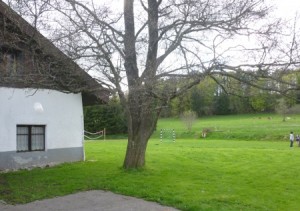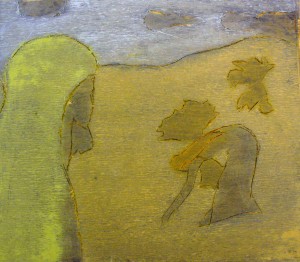
Youth hostel in alpine serenity
What’s the newest of the new in Jewish youth culture? To find out, I visited a machane, a Jewish summer camp, which congregated Europeans under the age of eighteen in a remote village in the Alps. Hoping to scout future Jewish ideas, themes, and memes, I had my eyes and ears open for interesting fashions, cool music, new media, games, slang, and food.
My quest was triggered by a slew of innovations brought about by the current generation. Deviators have exchanged their traditional tallitot (prayer shawls) for colorful ones with lilies and rainbows. Others have produced trip hop versions of Jewish songs, “Matzah raps,” and uploaded parodies of Biblical stories onto youtube. → continue reading
or What We Can Learn from Loving Women
Not long ago, we happened upon the website of a group of three young Jewish women “who care about different aspects of Jewish and Israeli identity and culture and who want to experience a meaningful Jewish life in Berlin.” They call themselves Hamakom (Hebrew: ‘the place’) and support, among others, more frequent encounters between Israelis and Jewish Germans. The group’s first event is a Tikkun lel Shavuot on the topic of “Women & Love,” the title clearly stating the theme of the evening. The event follows the tradition of studying and discussing specific Biblical texts and their interpretations on the night before Shavuot. This choice of topic reveals the meaning the holiday has in the discursive process of self-reflection.

Jakob Steinhardt, Illustration to the Book of Ruth, 1955-1959, woodcut
© Jewish Museum Berlin, donation of Josefa Bar-On Steinhardt, Nahariya, Israel
Shavuot begins this year on the eve of 14 May and ends two days later. It is a holiday of unusually multifaceted significance, and it is rediscovered and redefined by every generation anew. Originally, the holiday celebrated the beginning of the harvest season, which included a pilgrimage to the Jerusalem Temple. Pilgrims brought their first fruit and two loaves of wheat-bread to the temple. In the Talmud, Shavuot is conceived of as the festival on which the population of Israel received the Torah. In preparation of this donation, the holiday is also described as an Atzeret, a joyous assembly, which involves a night of communal thinking and debating. Tikkun lel Shavuot, as this nightly symposium is called in Hebrew, means literally: ‘The betterment during the night of the Feast of Weeks.’ It was first mentioned in the kabbalistic Zohar-book and gained importance in the 16th century.
The Jewish understanding of collective studying and discussing differs from that of the Greeks; → continue reading

